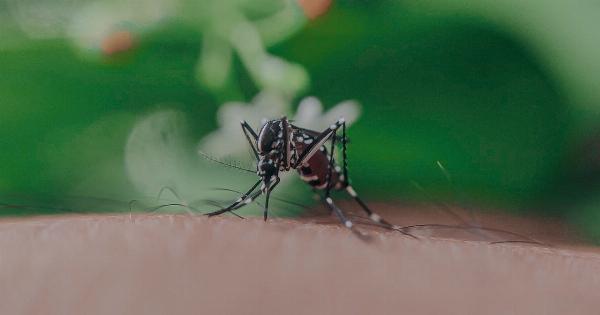Circulation problems can have various symptoms, such as swelling, numbness, and pain in the extremities. However, one often overlooked symptom is hair loss in the legs.
While it may not be as commonly associated with circulation issues as other symptoms, hair loss in the legs can indicate an underlying problem with blood flow. In this article, we will explore the connection between circulation problems and leg hair loss, the potential causes, and possible treatment options.
Understanding Circulation Problems
Circulation problems, also known as peripheral vascular disease or peripheral artery disease, occur when there is a restriction or blockage in the blood vessels that supply the arms, legs, or other peripheral areas of the body.
This reduces the flow of oxygenated blood to these areas, leading to a range of symptoms. While leg pain and swelling are commonly associated with circulation problems, hair loss is less well-known as a possible symptom.
The Role of Blood Flow in Healthy Hair Growth
To understand the connection between circulation problems and leg hair loss, it is important to first understand the role of blood flow in healthy hair growth.
Hair follicles require a steady supply of oxygen and nutrients to produce and maintain healthy hair. Inadequate blood flow to the legs can deprive the hair follicles of these essential elements, leading to hair loss.
Possible Causes of Leg Hair Loss in Circulation Problems
There can be various causes for hair loss in the legs due to circulation problems. Here are some potential factors:.
1. Atherosclerosis
Atherosclerosis refers to the buildup of plaque in the arteries, which can restrict blood flow. When this condition affects the arteries supplying the legs, it can lead to hair loss.
The reduced blood flow hinders the delivery of essential nutrients to the hair follicles, resulting in hair thinning or loss.
2. Peripheral Neuropathy
Peripheral neuropathy is a condition that affects the nerves in the extremities, including the legs. It can be caused by diabetes, vitamin deficiencies, or other underlying health issues.
When the nerves responsible for hair growth are damaged, it can lead to leg hair loss.
3. Diabetes
Diabetes affects blood sugar levels and can contribute to circulation problems. High blood sugar levels can damage blood vessels, leading to reduced blood flow to the legs. This compromised circulation can cause hair loss in the legs.
4. Venous Insufficiency
Venous insufficiency occurs when the veins in the legs have difficulty pumping blood back to the heart. This can result in blood pooling in the lower limbs, leading to poor circulation.
The inadequate blood flow can affect hair growth in the legs, causing hair loss.
5. Raynaud’s Disease
Raynaud’s disease is a condition that causes the blood vessels in the extremities to constrict in response to cold temperatures or stress. This narrowing of blood vessels can limit blood flow, potentially leading to leg hair loss.
Treatment Options
Once the underlying cause of circulation problems and leg hair loss is identified, treatment options can be explored. These may include:.
1. Medications
In some cases, medications may be prescribed to improve circulation and promote hair growth. These may include blood thinners, vasodilators, or medications to manage underlying conditions like diabetes or high cholesterol.
2. Lifestyle Changes
Implementing healthy lifestyle changes can significantly improve circulation. Regular exercise, a balanced diet, quitting smoking, and managing stress levels can all help enhance blood flow, potentially aiding in hair regrowth.
3. Medical Procedures
In severe cases or when other treatment options do not yield satisfactory results, medical procedures such as angioplasty or vascular bypass surgery may be considered to restore proper blood flow to the legs and promote hair growth.
4. Topical Solutions
Some topical solutions containing minoxidil or other hair growth-promoting ingredients may be recommended to stimulate hair follicles and encourage regrowth in the affected areas.
Prevention and Self-Care Tips
While not all circulation problems can be prevented, certain self-care measures can help minimize the risk and manage existing conditions:.
1. Regular Exercise
Engaging in regular physical activity can improve circulation and overall cardiovascular health. Moderate aerobic exercises like walking, swimming, or cycling are beneficial for promoting blood flow.
2. Healthy Diet
A diet rich in fruits, vegetables, lean proteins, and whole grains supports optimal circulation. Avoiding processed foods, sugary drinks, and excessive salt can help maintain healthy blood vessels and prevent blockages.
3. Avoid Prolonged Sitting or Standing
Prolonged sitting or standing can increase the risk of circulation problems. Taking breaks, stretching, and avoiding crossing your legs while seated can promote blood flow and reduce the risk of hair loss in the legs.
4. Manage Underlying Conditions
If you have underlying conditions like diabetes or high cholesterol, it is essential to manage them effectively.
Following your healthcare provider’s recommendations and taking prescribed medications can help maintain optimal circulation and minimize hair loss.
Conclusion
While hair loss in the legs may not be the most well-known symptom of circulation problems, it can serve as a crucial indicator of an underlying issue. Identifying the cause of leg hair loss is essential for proper treatment.
If you experience any unexplained leg hair loss or notice changes in hair growth patterns, it is advisable to consult with a healthcare professional. Timely intervention and appropriate treatment can help address circulation problems and promote healthy hair growth.






























